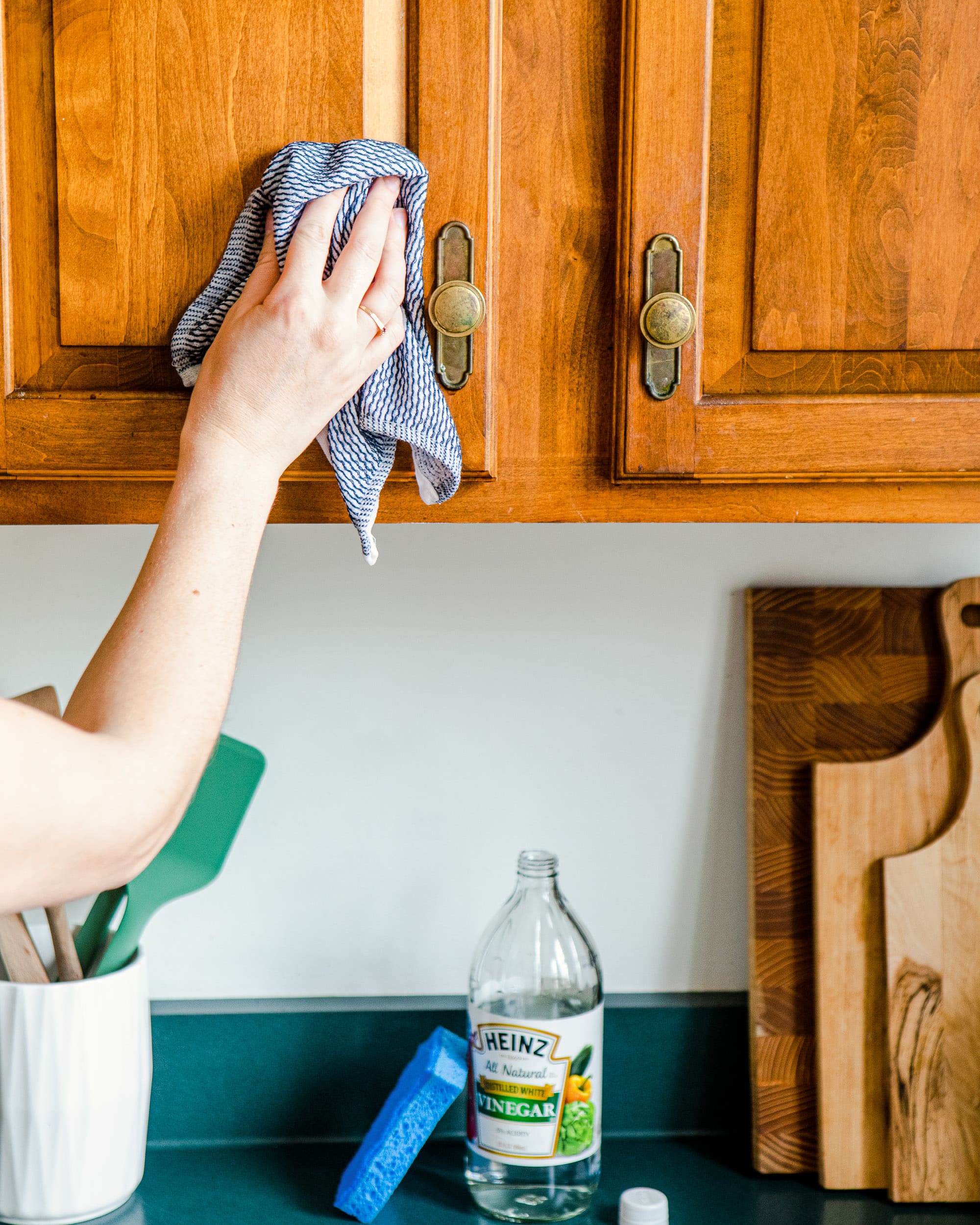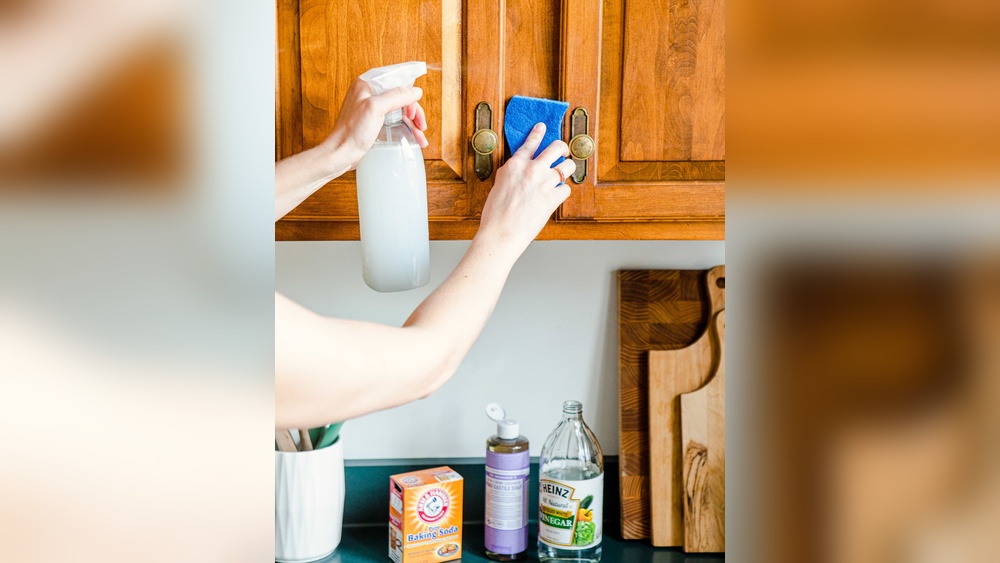Are your kitchen cabinets looking dull and sticky from built-up grease? You’re not alone.
Grease can sneak onto your cabinets every time you cook, leaving behind a stubborn film that’s tough to remove. But don’t worry—cleaning kitchen cabinet grease doesn’t have to be a frustrating chore. With the right approach, you can restore your cabinets’ shine and keep your kitchen feeling fresh.
In this guide, you’ll discover simple, effective methods using ingredients you probably already have at home. Ready to say goodbye to greasy cabinets and hello to a cleaner kitchen? Let’s dive in and make your cabinets sparkle again!
Grease Causes On Cabinets
Grease builds up on kitchen cabinets mainly from cooking oils and food splatters. Hot air from frying or sautéing carries tiny oil droplets. These droplets settle on cabinet surfaces, creating a sticky layer. Over time, dust sticks to the oil, making the grease look thicker and darker.
Smoke from cooking also adds to the grease. It leaves a thin film on cabinets that is hard to see but attracts dirt. Cabinets near the stove or oven get the most grease. Cabinets made of wood or laminate show grease more clearly than metal ones.
Touching cabinets with oily hands spreads grease further. Cleaning with water alone cannot remove the oily layer well. This is why special cleaners or mixtures with soap work better to break down grease.

Essential Cleaning Supplies
Gathering essential cleaning supplies helps remove grease effectively. Use dish soap with warm water for gentle cleaning. A soft microfiber cloth or sponge works best to avoid scratches. For tough spots, prepare a baking soda paste by mixing baking soda with water. A soft toothbrush reaches small corners and handles. Keep a clean, damp cloth ready to rinse off soap residue. Finally, use a dry cloth to wipe surfaces dry, preventing water marks and damage.
Dish Soap And Warm Water Method
Mix a few drops of dish soap into a bowl of warm water. Stir gently until suds form.
Dip a soft microfiber cloth or sponge into the solution. Wring out excess water to avoid drips.
Wipe the cabinet surfaces in small circles to lift the grease. Focus on visible spots.
Use a soft toothbrush dipped in the solution to scrub corners and handles. These areas often collect stubborn grime.
After scrubbing, wipe all surfaces with a clean, damp cloth to remove soap residue. This prevents streaks.
Dry the cabinets quickly with a dry cloth. This step stops water marks and damage.
Baking Soda Paste Technique
Mix baking soda with a small amount of water to make a thick paste. The paste should be easy to spread but not runny. Use about three parts baking soda to one part water.
Apply the paste directly to the greasy spots on the kitchen cabinets. Use a soft cloth or a sponge to spread it evenly. Cover all dirty areas well.
Let the paste sit for about 10 to 15 minutes. This wait helps to break down the grease and makes cleaning easier. Avoid scrubbing during this time.
Use a damp cloth to gently wipe off the baking soda paste. Rinse the cloth often to remove all residue. After removing the paste, wipe the cabinets with a clean, damp cloth for a final rinse.
Dry the cabinets with a soft towel or cloth. This step prevents water spots and keeps the surface clean and shiny.
Using Vinegar For Tough Grease
Vinegar is a strong cleaner for tough grease on cabinets. Mix equal parts of white vinegar and warm water in a spray bottle. Spray the mixture onto greasy areas and let it sit for 5 minutes. This helps to break down the grease quickly.
Use a soft cloth or sponge to wipe the cabinets gently. For hard-to-reach spots, a soft toothbrush works well. Rinse the area with a damp cloth to remove vinegar residue. Finally, dry the surface with a clean towel to avoid streaks or water spots.

Tools To Avoid
Avoid using abrasive scrubbers like steel wool or rough sponges. They can scratch and damage cabinet surfaces. Stay away from harsh chemical cleaners such as bleach or ammonia. These can strip the finish and cause discoloration.
Do not use excessive water as it can warp wood or loosen glue. Avoid oily or greasy cloths since they can spread more grease. Steer clear of spray cleaners with strong scents that may leave residue or irritate skin and eyes.
Soft microfiber cloths and mild soap solutions are the best choices. Gentle tools keep cabinets clean and safe without damage.
Maintenance Tips For Cabinets
Keeping kitchen cabinets clean starts with a regular cleaning routine. Wipe cabinets at least once a week to stop grease buildup. Use a soft cloth dipped in warm, soapy water for best results. Always clean along the grain of the wood to avoid scratches and damage.
For tough stains, act fast. Handle stains promptly to prevent them from setting. Use a gentle cleaner or a mix of dish soap and vinegar. Avoid harsh chemicals that can harm the cabinet finish. After cleaning, dry cabinets well to stop moisture damage and keep them looking fresh.

Preventing Grease Build-up
Grease can build up fast on kitchen cabinets. To prevent this, clean cabinets often. Wipe them after cooking with a damp cloth. Avoid letting grease stay for days.
Use a gentle cleaner like warm water and mild soap. This stops grease from sticking. Keep the kitchen ventilated to reduce grease spread. A small fan or open window helps a lot.
Try to avoid spraying oil or cooking sprays near cabinets. Use lids on pots to cut grease splashes. Place mats or paper towels near cooking areas to catch spills.
Cleaning small spills right away stops big problems later. Also, check handles and edges often. These spots get greasy quickly and need more care.
Frequently Asked Questions
What Is Best To Clean Grease Off Kitchen Cabinets?
Use a mixture of dish soap and warm water with a soft cloth to clean grease off kitchen cabinets. For tough grease, apply a baking soda paste, scrub gently, then wipe with a damp cloth. Always dry cabinets to prevent damage and maintain their finish.
How Do You Remove Icky Sticky Greasy Gunk From Kitchen Cabinets?
Mix dish soap with warm water and wipe cabinets using a soft cloth. For tough grease, apply a baking soda paste gently. Scrub corners with a soft toothbrush. Rinse with a damp cloth and dry immediately to prevent damage and streaks.
Repeat regularly for best results.
Can You Use Dawn To Degrease Cabinets?
Yes, Dawn effectively degreases cabinets by breaking down grease. Mix with warm water, wipe gently, rinse, and dry for best results.
How To Clean Wood Kitchen Cabinets Without Damaging The Finish?
Mix mild dish soap with warm water. Use a soft cloth to gently wipe cabinets along the wood grain. Rinse with a damp cloth, then dry immediately. Avoid abrasive cleaners and scrubbers to protect the finish. Repeat regularly to prevent grease buildup.
Conclusion
Cleaning kitchen cabinets from grease does not have to be hard. Use simple solutions like dish soap and warm water first. For tough spots, try baking soda paste or vinegar mixtures. Always scrub gently to protect cabinet surfaces. Rinse well to avoid leftover residue.
Dry cabinets quickly to stop water damage. Regular cleaning keeps cabinets fresh and grease-free. Small efforts make your kitchen look neat and inviting. Keep these easy steps in mind for a cleaner kitchen every day.

